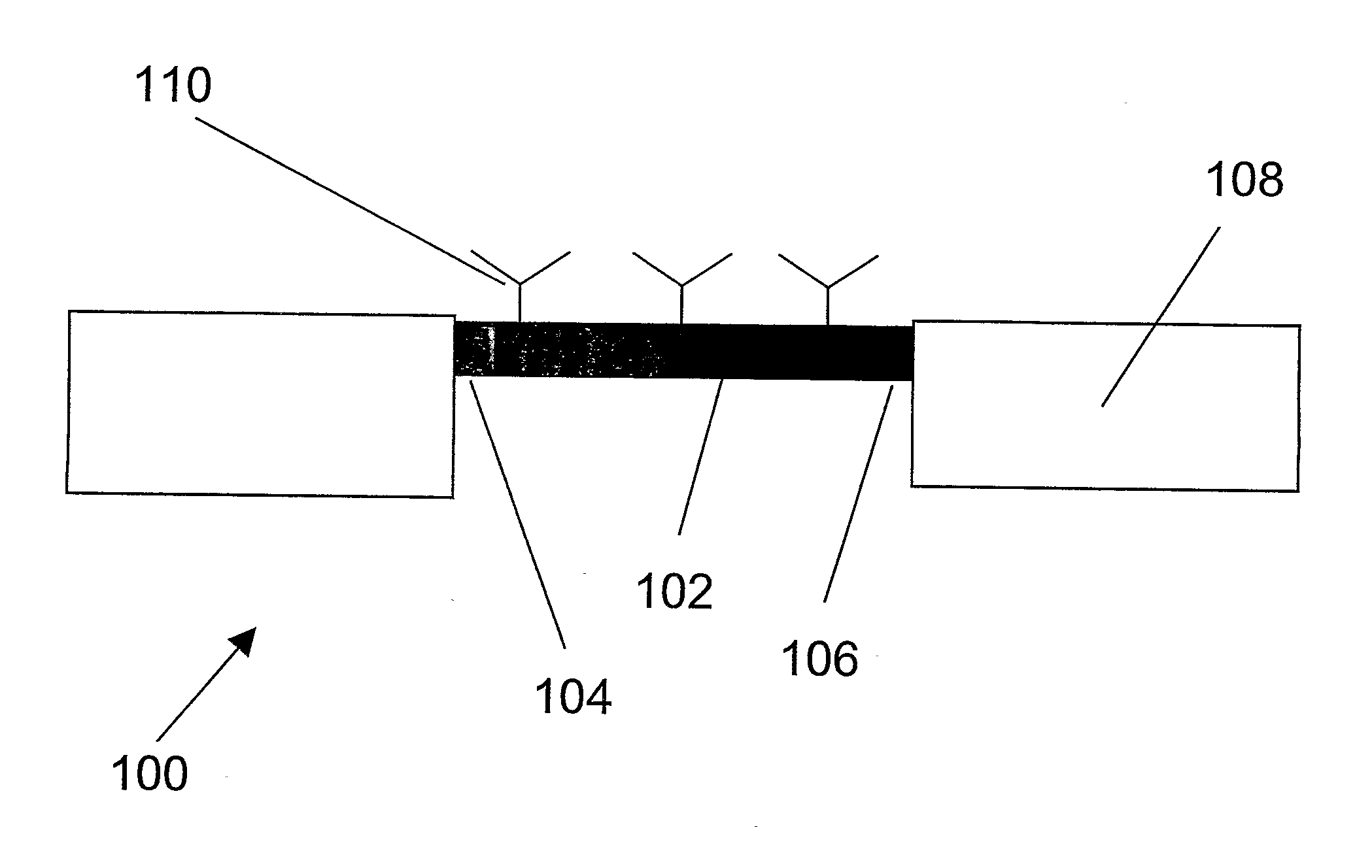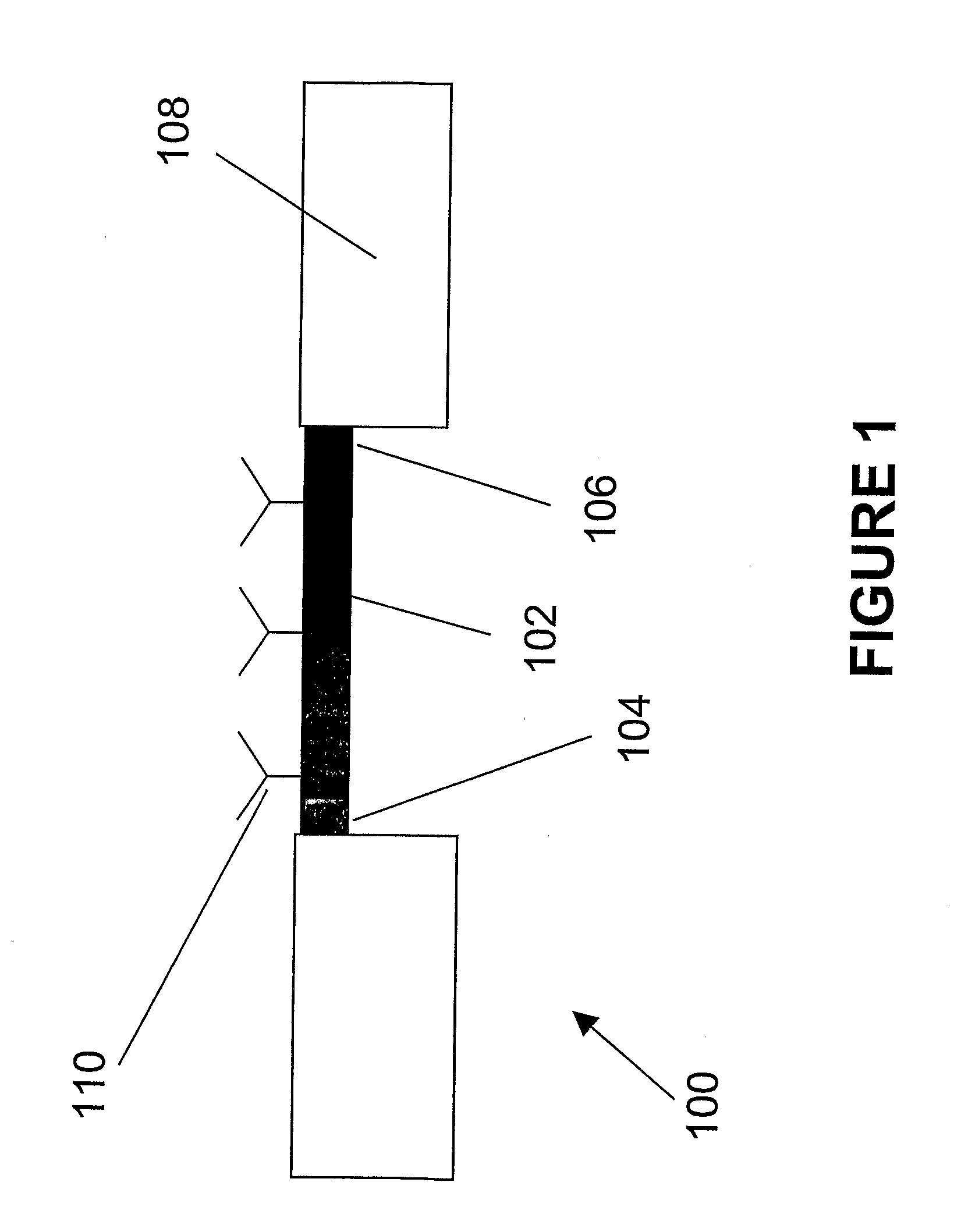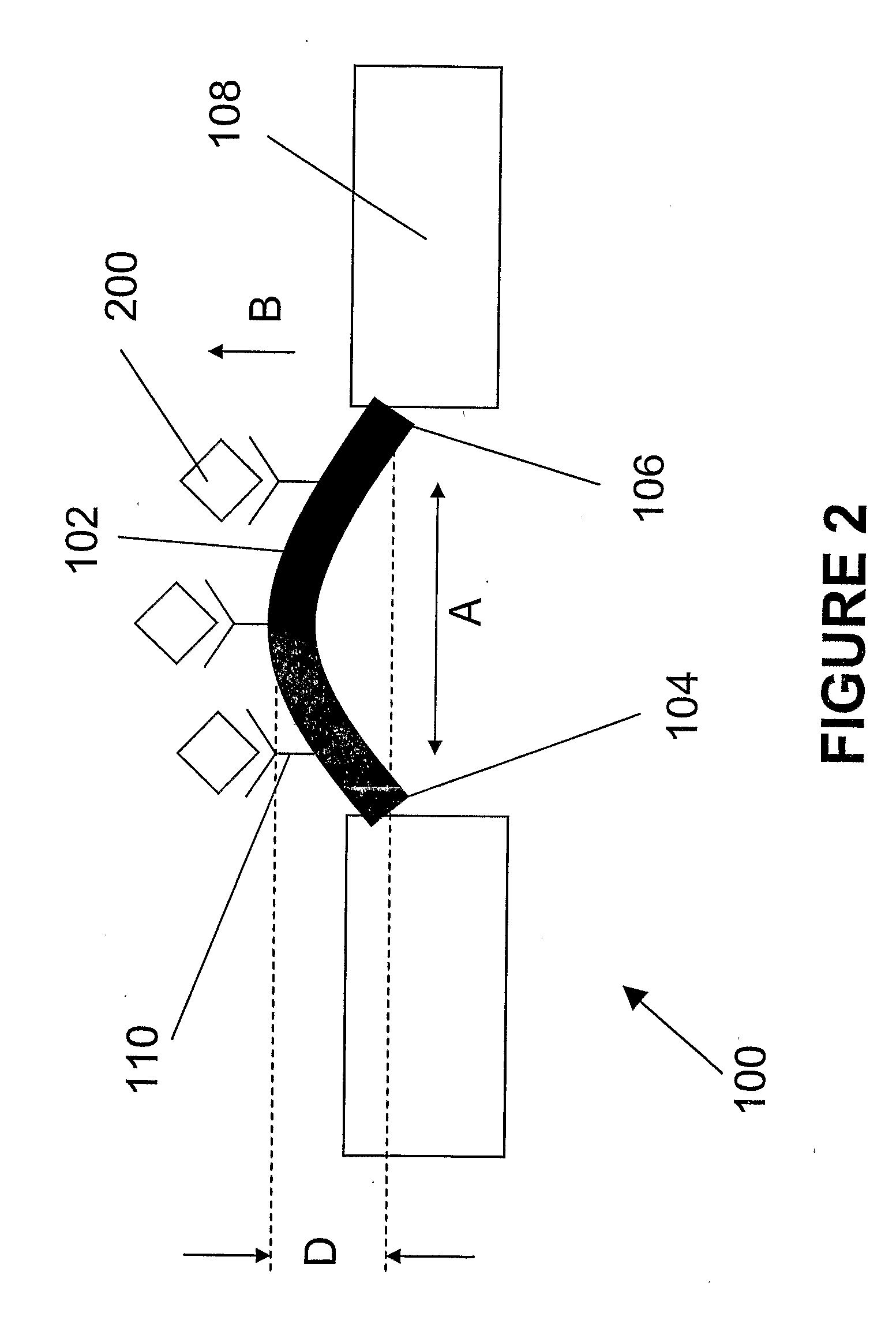Microdevices for Chemical Sensing and Chemical Actuation
a micro-device and sensor technology, applied in the direction of chemical indicators, laboratory glassware, instruments, etc., can solve the problems of limiting the sensitivity of current devices, affecting the detection accuracy of chemical and biological materials, etc., and achieve the effect of high resolution
- Summary
- Abstract
- Description
- Claims
- Application Information
AI Technical Summary
Benefits of technology
Problems solved by technology
Method used
Image
Examples
Embodiment Construction
[0035]A schematic diagram of the present sensor 100 is depicted in FIG. 1. The sensor 100 contains a membrane 102 that is clamped to a platform 108 at least at two ends 104, 106 or around part of or the entire periphery of the membrane. To facilitate specific binding to the analyte, the surface or surfaces of the membrane 102 may be derivatized with a binding member 110 of a binding pair, such as antibody / antigen or complimentary nucleic acids. Although FIG. 1 shows one surface of the membrane 102 being derivatized with a binding member, the other side or both surfaces may contain the binding member depending on which side of the membrane comes in contact with the analyte. If both sides of the membrane 102 come in contact with the analyte, both sides may contain the binding member.
[0036]As shown in FIG. 2, when the analyte 200 binds to the binding member 110, the membrane 102 deform out-of-plane by distance D. This deformation is caused by the surface stress in direction A, that ten...
PUM
| Property | Measurement | Unit |
|---|---|---|
| Deformation enthalpy | aaaaa | aaaaa |
| Adsorption entropy | aaaaa | aaaaa |
Abstract
Description
Claims
Application Information
 Login to View More
Login to View More - R&D
- Intellectual Property
- Life Sciences
- Materials
- Tech Scout
- Unparalleled Data Quality
- Higher Quality Content
- 60% Fewer Hallucinations
Browse by: Latest US Patents, China's latest patents, Technical Efficacy Thesaurus, Application Domain, Technology Topic, Popular Technical Reports.
© 2025 PatSnap. All rights reserved.Legal|Privacy policy|Modern Slavery Act Transparency Statement|Sitemap|About US| Contact US: help@patsnap.com



